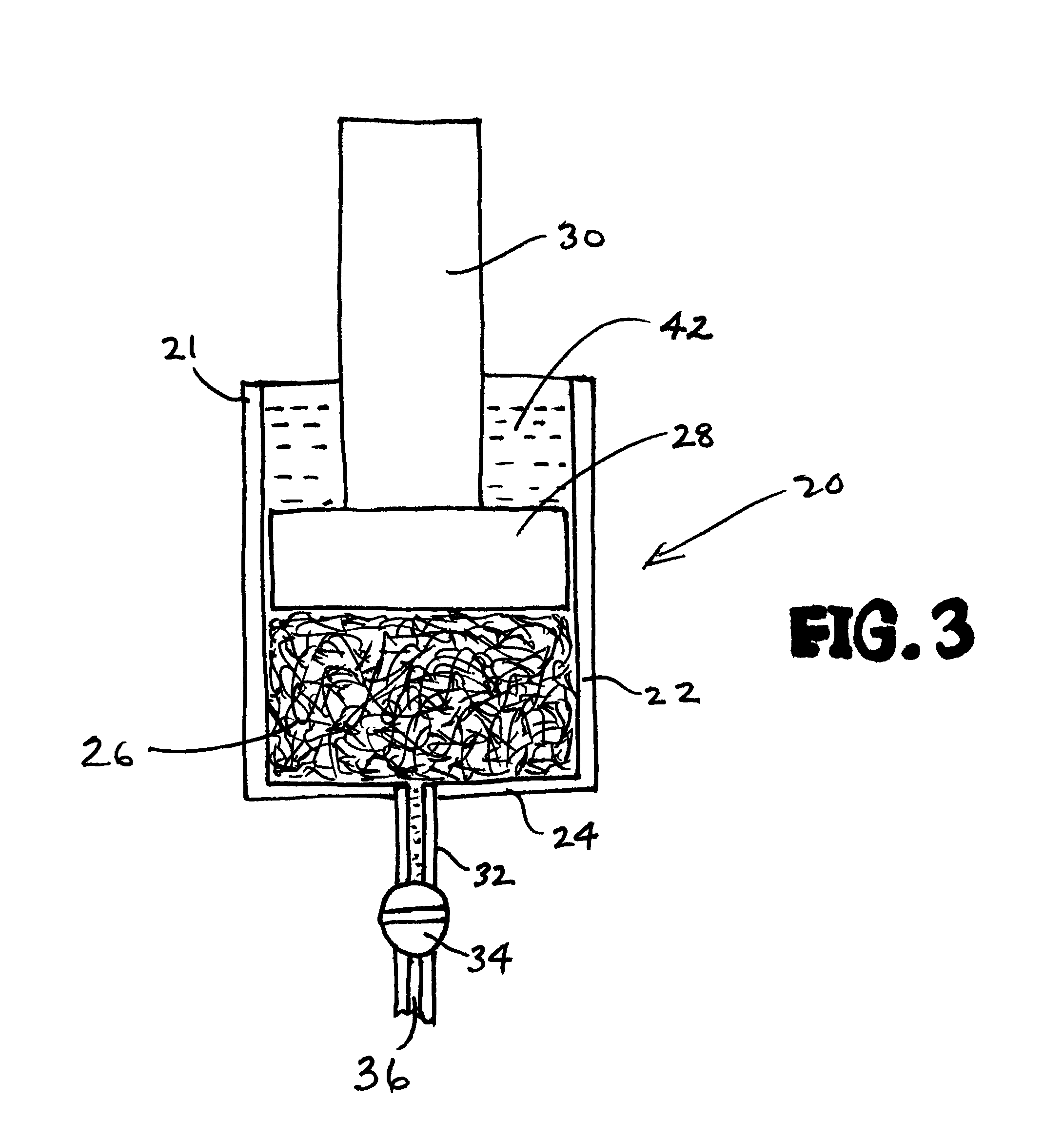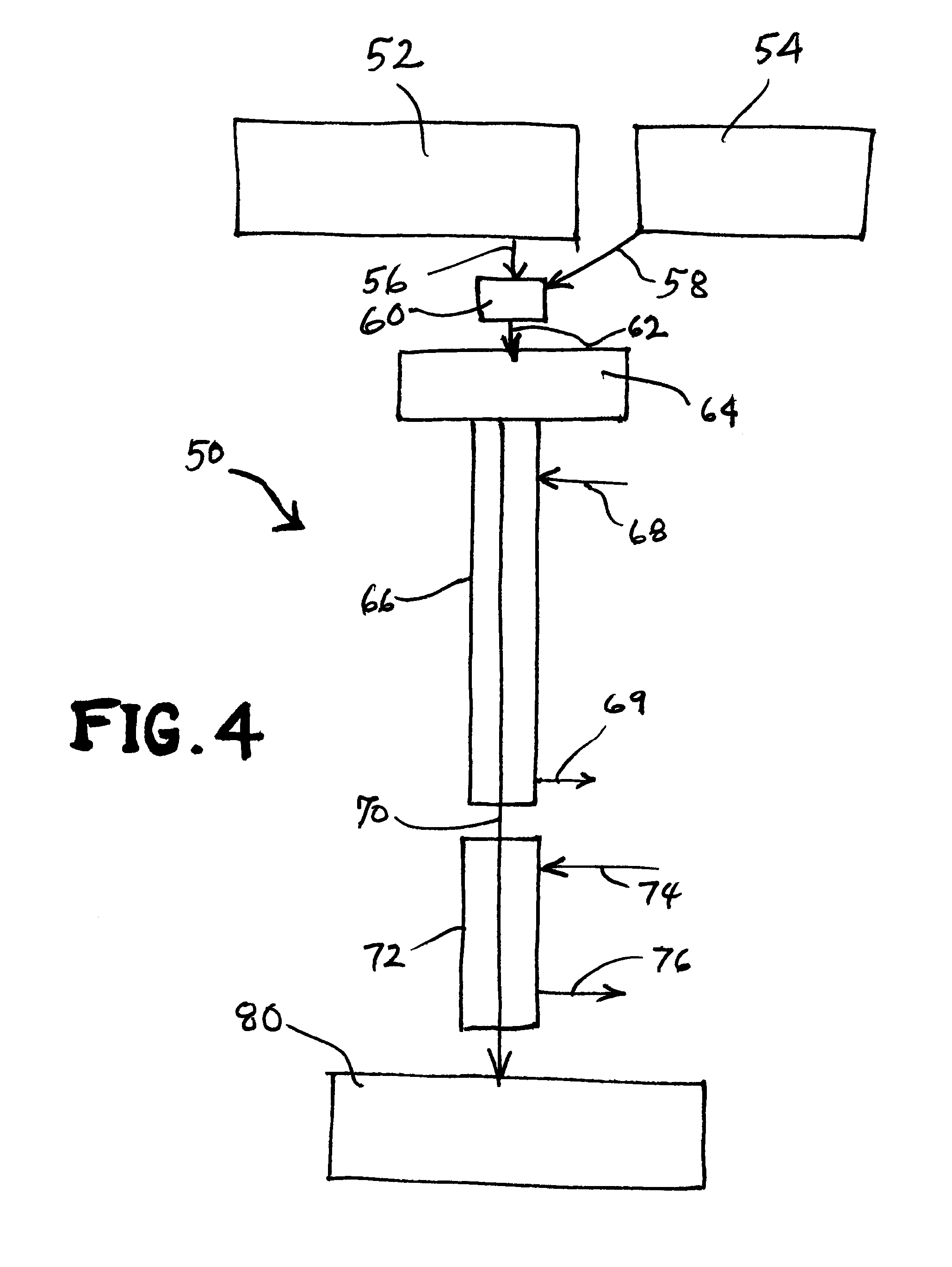Vitreous carbon composite and method of making and using same
a vitreous carbon and composite technology, applied in the field of reinforced vitreous carbon composites, can solve the problems of non-homogeneous and non-isotropic product composites, inability to use in applications, and substantial trapped heat released by polymerization
- Summary
- Abstract
- Description
- Claims
- Application Information
AI Technical Summary
Problems solved by technology
Method used
Image
Examples
Embodiment Construction
The present invention is based, inter alia, on the discovery that vitreous composites of a highly superior character can be formed by use of appropriate thermal management techniques in the polymerization process by which the liquid resin for the continuous phase material is converted to a polymer that in turn may be pyrolyzed to yield the vitreous carbon continous phase of the composite.
The liquid resin may comprise monomer and / or oligomer for the continuous phase material, and the processing of the resin to form the polymer involves a balance of the degree of polymerization of the resin, the rate of heat removal from the resin, and the process conditions of the polymerization, so that the polymerization process is managed to produce a polymer composite that will be essentially free of voids, foaming and fume tracks, and other morphological abnormalities. In this manner, a composite can be produced that is homogeneous, isotropic and possessed of good structural and performance, e.g...
PUM
| Property | Measurement | Unit |
|---|---|---|
| mean diameter | aaaaa | aaaaa |
| mean diameter | aaaaa | aaaaa |
| thicknesses | aaaaa | aaaaa |
Abstract
Description
Claims
Application Information
 Login to View More
Login to View More - R&D
- Intellectual Property
- Life Sciences
- Materials
- Tech Scout
- Unparalleled Data Quality
- Higher Quality Content
- 60% Fewer Hallucinations
Browse by: Latest US Patents, China's latest patents, Technical Efficacy Thesaurus, Application Domain, Technology Topic, Popular Technical Reports.
© 2025 PatSnap. All rights reserved.Legal|Privacy policy|Modern Slavery Act Transparency Statement|Sitemap|About US| Contact US: help@patsnap.com



